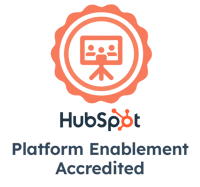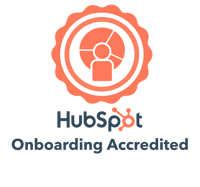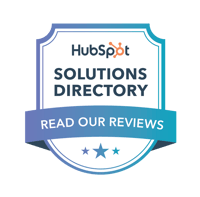Inbound marketing is the most effective online marketing tactic for finding highly qualified leads who are likely to work with your brand. With automation tools, inbound marketing lets you connect with potential customers and engage them automatically.
To harness the power of Inbound marketing, you first have to understand it. Let's explore some real examples of inbound marketing automation.
What is Inbound Marketing?
First, a quick refresher on inbound marketing. Inbound marketing starts with creating valuable, interesting content that your target audience wants, instead of just advertising your services. The goal with inbound marketing is for your audience to find you, not the other way around.
This aligns with how most customers engage with brands in the modern era. Think about your own purchasing decisions - when you have a problem or a need, how often do you first take to Google, YouTube or social media to start researching? The methodology of inbound marketing is based on the psychology of user behavior - also known as the buyer's journey.
Related Content: What's the Difference Between Digital Marketing and Inbound Marketing?
Examples of Inbound Marketing Assets
The asset is at the core of all inbound marketing efforts. It's the specific piece of content that first entices a visitor to engage with your brand. This can include, but isn't limited to:
- Blogs
- Infographics
- YouTube videos
- Quizzes
- Research papers
- Downloads (ebooks, checklists, guides)
These assets can be gated or ungated - meaning, they can require a form fill to access or be publicly available. Your end goal is to acquire a contact's information through a form so you can directly engage with them on their terms, but it's also common that the first point of engagement for a contact is simply additional information relating to what they searched for on your site.

Assets per stage of the buyer's journey
The buyer's journey is the path a visitor takes to becoming a customer. The inbound methodology includes three stages: Awareness, Consideration and Decision. The awareness stage is all about users finding you when they conduct their research online. Assets at this stage can be gated or ungated. The consideration stage is about directly connecting with that contact. This stage is dependent on receiving a contact's information, either from the previous stage or during this stage. Finally, the decision stage is where you can use automation to close a deal and create a "fan" of your product, service or company.
Awareness Tools
Research or Analyst Reports
Blogs or Editorial Content
eBooks & eGuides
Quizzes
Whitepapers
Templates & Worksheets
Checklists
Consideration Tools
Comparison Whitepapers
Expert Guides
Live Interactions
Chatbots
Specific Service Info
Podcasts
Videos
Decision Tools
Vendor Comparisons
Product Comparisons
Surveys
Case Studies
Knowledge Bases
Trial Downloads
Live Demos
What is Inbound Marketing Automation?
Automation uses tools to ensure that specific, routine tasks are executed without a human needing to metaphorically "push a button" each time. For an inbound campaign, automation typically includes a combination of any of the following:
- Updating data properties
- Sending specific emails in a sequence
- Sending SMS messages
- Creating task reminders
- Using data to segment contacts
- Personalization and smart content
The automations you can create depend on the marketing tools you use. Some tools, like Constant Contact and Mailchimp, offer limited automation based on emails, while others, like HubSpot and Salesforce, offer a wide range of automation options.
Related Content: HubSpot vs Salesforce: Which is Better?
5 Examples of Inbound Marketing Automation
1. Content download
The most common - and still incredibly effective - inbound marketing asset is a good ol' fashioned download. This could be in the form of an ebook, guide, template, checklist or even a research paper. In addition to delivering the requested asset itself, you can use automation for follow-up and internal notifications.
A content download with automation might look like this:
- A user fills out a form on a landing page to request your downloadable asset.
- Immediately, they are redirected to a thank you page with a link to download the asset.
- At the same time, an automated email with a link to the asset is sent to their email address. This usually includes a button for the user to schedule a meeting with a sales rep if they have more questions.
- An automated workflow adds the user's contact information to your CRM and automatically assigns a salesperson to that lead.
- A few days later, the lead receives another automated email with additional information related to the asset, and another clickable link to schedule a meeting with a sales rep.
- If the user clicks on the button but doesn't book a meeting, a notification is sent to the sales team that they've engaged with the message but haven't taken action. If they book a meeting, then they are removed from future automation actions within this specific inbound instance.
- Repeat steps 5 and 6 at least twice, but no more than four times—each time with different email content and/or desired actions. The goal is to always add value and create a "choose your own adventure" style interaction.
If you need an idea of how to build this automated workflow - check out our mock-up of a content download workflow built in HubSpot, and check out even more workflows in our blog: 5 More Essential HubSpot Workflows to Copy.
2. Webinar registration
Webinar enrollments are the perfect avenue for inbound marketing automation. In fact - if you don't automate your webinar process, you'll likely find a huge drop-off between registrants and attendees. Everyone's busy, and automation is the perfect way to ensure your webinar stays top-of-mind while nurturing connections.
A best-practice webinar with inbound automation should include the following, at a minimum:
- An immediate confirmation email once a user registers, with a link for them to add the event to their calendar. You can use some of the automated tools in Zoom, Microsoft Teams or Google Meet for the confirmation email, but I recommend creating it from scratch instead as these auto-generated emails aren't always optimized for your audience.
- A series of reminder emails leading up to the webinar. Each should include date and time info, as well as the option for users to add the event to their calendar if they haven't already done so. If you want to supercharge your event even more, give them the option to submit questions via a form ahead of time, or access to advance materials to help make the event more engaging.
- After the webinar, use intelligent automation to send a follow-up email based on whether or not the contact attended your event. You'll want to send an email either way, but use different language and calls-to-action as relevant.
Using these simple automatic tactics, you can easily connect with webinar registrants. You can also take it to the next level by using SMS-based automation to nurture them from registrant to attendee.
Related Content: How to Use SMS Marketing to Increase Event Attendance

3. Automation based on activity
You can create inbound marketing automation based on specific actions. With tools like HubSpot, once a contact is in your system and has consented to your cookies (yum!), you'll be able to track their activity across your site. Here are a few examples of how you can use activity-based automation.
- If a contact has downloaded a specific asset, they'll be added to a contact list to receive future, relevant emails for content or promotions related to the topic of the asset (such as related eBooks, etc.).
- If a contact downloads several assets but has not engaged with your sales team, use automation to send them communications with alternative calls to action and/or options to spark a live conversation.
- If a contact has been on your site X number of times in a specific week, and/or viewed a specific page X times, use automation to welcome them in - either through a pop-up with a special offer or through an email.
- If a contact has completed certain steps in your buying process - but not all of them - use email and/or SMS automation to encourage them to take the next step.
The key to using action-based automation is to make sure you don't cross the line from "helpful" to "creepy." Timing is crucial when it comes to automation. Instead of immediately bombarding users with emails after they take a specific action, consider adding a slight delay. Put yourself in their shoes - how would you feel if you were receiving these emails? A slight pause can improve your user's experience and make your messages feel more welcoming.
4. Automation based on inactivity
You can also use automation for the opposite - to reach out to contacts based on actions they haven't taken. You likely have plenty of contacts in your system that engaged with you directly through inbound campaigns, but then never took the next action. Your goal is to nudge them along to the next stage in their buyer's journey. Some examples include:
- They've subscribed to your newsletter and opened it, but they haven't made a purchase. Use automation to send them a specific offer or discount.
- They've downloaded asset(s) in the past but haven't been back to your site since. Use automation to create a workflow to reconnect with these absent contacts with helpful content after a certain period of inactivity.
- They attended a webinar, but never took a next action. Use automation to invite them to future webinars, and send them an asset on the same topic as the webinar they attended.
- They took a self-guided action like signing up for a demo, but they never created an account or reached out to a salesperson. Follow up with a personalized email.
The only word of caution I have with this type of automation is that you first want to filter out any contacts who are not in your target audience based on the data you have. Inactivity can often come from contacts who fill out a form to get a download, but who aren't actually in your target market and have no need for your services. You'll want to exclude these contacts from any follow-ups.
5. Solicit reviews and user-generated content
You can also use automation to solicit reviews and user-generated content from current clients who have engaged with you through inbound avenues in the past.
Reviews
One recommendation for soliciting reviews is to set up automation that sends a current client who has not submitted a review an email asking them to rate their experience. If they choose 4 or 5 stars, direct them right to your desired review site (Google, Yelp, Facebook, etc.).
If they click 3 stars or below, they should be sent to a support page where they can share their experience. You can set tasks for your service team to immediately follow up with submissions and fix any issues quickly.
This should go without saying, but only send these emails to current or past clients - don't just send them to your whole contact list!
User-Generated Content
There are a few ways to meet your audience where they're spending their time online and encourage them to engage. The simplest is to create a hashtag and encourage your audience to post content under that hashtag in exchange for some sort of reward (example: "Tag your posts with #CompanyPromotion to be featured on our site"). You can post directions publicly to your social media and/or via email.
Likewise, you can solicit user-generated content via email by asking customers to upload a pic using your product, in exchange for a reward. For example - create a simple form where users can upload their photos, and send them a coupon for 5% off their next purchase.
Unlocking the Power of Inbound + Automation with the Right Tool
The secret to creative, effective, automated inbound marketing campaigns is choosing the right tool. I recommend HubSpot - it has everything you need to create inbound assets and complex automation.
Using workflows, you can create a complex web of actions that are all automated. Examples include (but aren't limited to):
- Update contact properties as users move through the campaign
- Automatically notify sales, marketing or customer service when a specific action is taken
- If/then branches that guide users down different paths depending on the actions they take
- Segmenting and personalizing follow-ups based on contact properties and/or activities
- Sync data from workflows to external tools
- Follow up with leads by sending them additional emails or SMS messages at timed intervals
- Automatically exclude bad-fit or "not-now" leads from hot leads
Related Content: Is HubSpot the Best Comprehensive Inbound Marketing Tool?
Free Guide: What is HubSpot and How Can it Grow Your Business?
Discover how to grow your business with an all-in-one sales, marketing, website, customer service, and CRM powerhouse. Explore the power of HubSpot and its core Hubs to decide if it's right for your business and growth goals.
BizzyWeb is a Minneapolis-based digital marketing and web design agency that helps companies get the high-quality leads they need to grow and thrive. Our tactics include inbound marketing, SEO, advertising, web design, content creation and sales automation. We are an accredited HubSpot Diamond Partner and we offer full-service HubSpot onboarding, enablement and strategy for new and current users.








